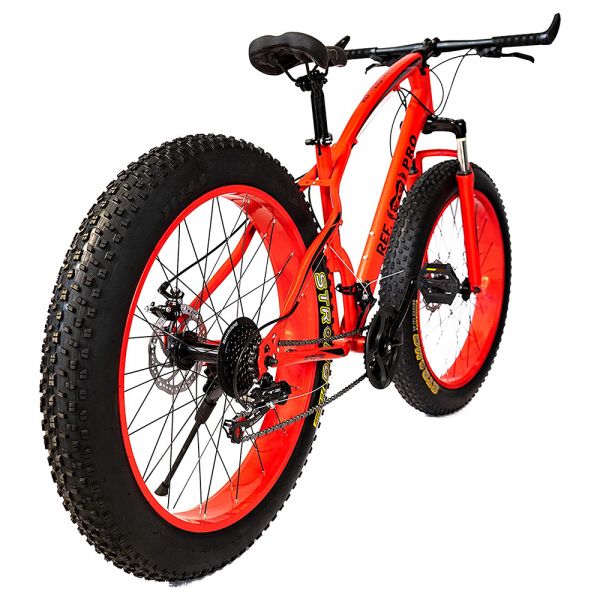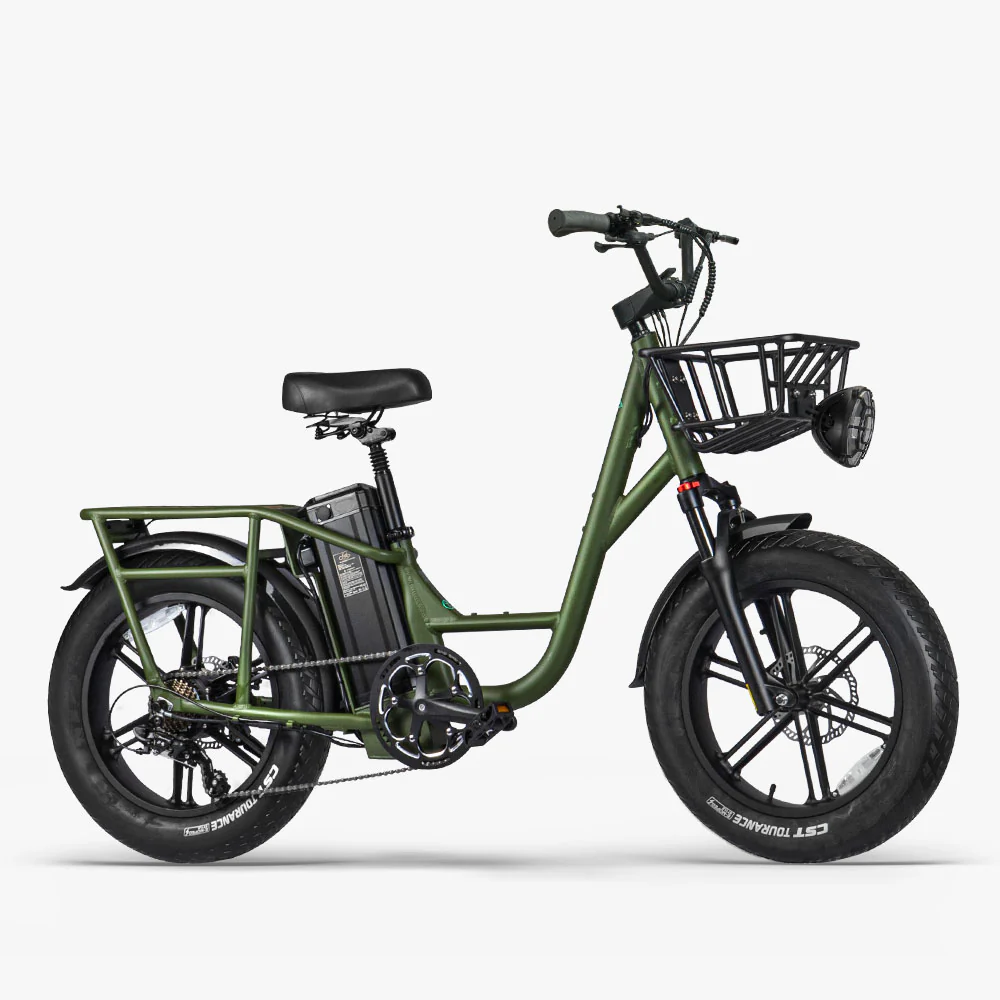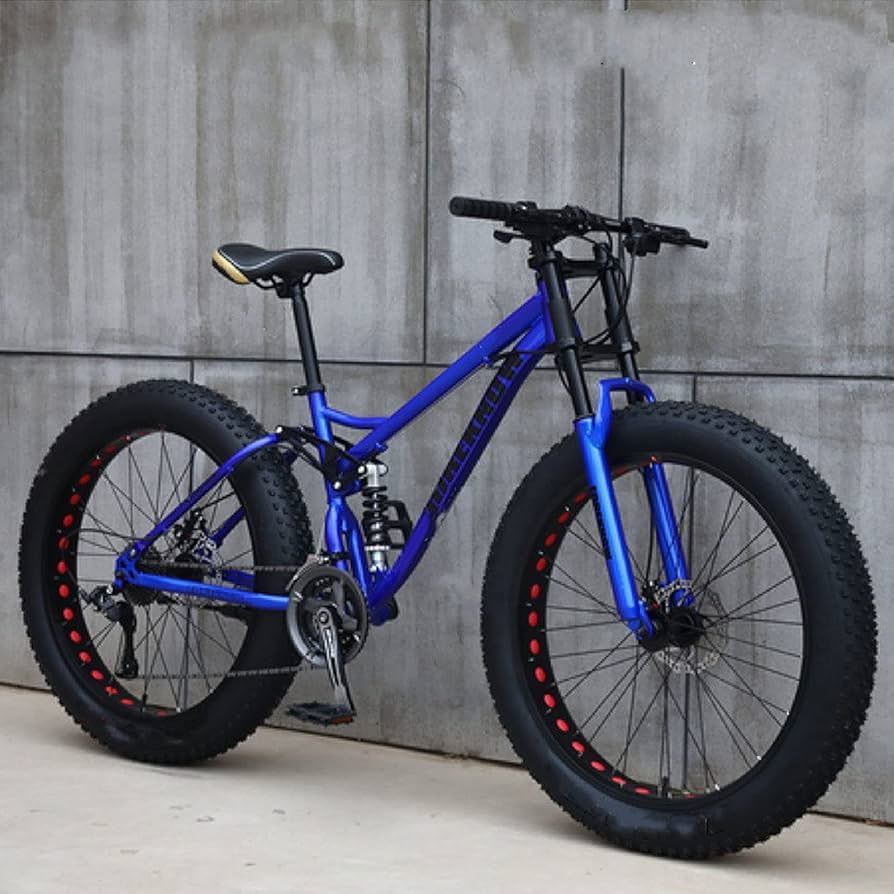I. Introduction

Fat tire bicycle has become increasingly popular in recent years, attracting a wide range of cycling enthusiasts. These bikes, with their oversized tires, provide enhanced stability and traction on various terrains, making them suitable for off-road adventures and urban commuting alike. In this article, we will explore the reasons behind the rise in popularity of fat tire bicycles and provide a comprehensive understanding of their features and benefits.
II. Understanding Fat Tire Bicycle
a. What Is Fat Tire Bicycle?
To understand fat tire bicycles, it is crucial to delve into their unique characteristics. We will discuss the defining features of fat tire bikes, such as their wide tires ranging from 3.8 to 5 inches, which provide increased flotation and grip on challenging surfaces like snow, sand, and mud. Moreover, we will explore the specific design elements that set fat tire bicycles apart from traditional bicycles.
b. Key Features and Benefits of Fat Tire Bicycle
Fat tire bicycle offers several advantages that make them a popular choice among cyclists. We will examine the benefits of wider tires, including improved stability, increased shock absorption, and better traction. Additionally, we will discuss other notable features found on fat tire bikes, such as wider rims, lower tire pressure, and specialized frame designs.
c. Types of Riding Fat Tire Bicycles are Suitable for
Fat tire bicycles excel in a variety of riding conditions, making them adaptable to different terrains and purposes. We will explore the different types of riding that fat tire bikes are suitable for, including off-road adventures, snow cycling, urban commuting, and even bikepacking. Understanding the versatility of fat tire bicycles will help riders determine the best use for their bike based on their preferences and needs.
III. Getting Started with Fat Tire Bicycle
a. Choosing the Right Fat Tire Bicycle
Selecting the right fat tire bicycle is essential for an enjoyable and comfortable riding experience. We will discuss key factors to consider when choosing a fat tire bike, such as frame material, suspension options, tire width, and gearing systems. By understanding these considerations, riders can make an informed decision based on their desired riding style and terrain.
b. Proper Fit and Sizing for Fat Tire Bicycle
A properly fitting bike is crucial for comfort, control, and efficient riding. We will provide guidelines on how to determine the correct frame size, adjust saddle height, and position handlebars for optimal ergonomics. Ensuring a proper fit will enhance safety, reduce the risk of injuries, and improve overall riding performance.
c. Essential Gear and Accessories for Fat Tre Bicycle
Alongside a well-fitted bike, having the right gear and accessories is essential for an enjoyable and safe fat tire biking experience. We will discuss the necessary protective gear, such as helmets, knee pads, and gloves, as well as other accessories like bike lights, fenders, and racks. Understanding the importance of these items will help riders prepare for various riding conditions and potential challenges.
IV. Riding Techniques and Skills for Fat Tire Biking
a. Handling Techniques for Fat Tire Bicycle
When it comes to riding a fat tire bicycle, mastering the handling techniques is crucial. These bikes are specifically designed to tackle challenging terrains, so learning the right way to handle them will make your rides more enjoyable and safe.
- Body Position: Maintain a relaxed but active position on your bike. Keep your body centered over the bike with knees slightly bent, elbows slightly flexed, and lower back slightly arched. This will give you better control and stability.
- Grip: Hold the handlebars firmly with both hands, but avoid gripping too tightly. This will allow you to absorb shocks and vibrations from the trail more effectively.
- Cornering: When approaching a corner, lean your body and bike into the turn while keeping your weight balanced. Look through the turn and focus on where you want to go. As you exit the corner, gradually straighten the bike back up.
- Steering: When navigating through tight spaces or obstacles, use quick, small movements to steer the bike. Experiment with different grip positions on the handlebars to find what feels most comfortable and gives you the most control.
b. Riding Techniques for Different Terrains
Fat tire bicycles are designed to perform well on various terrains, from sand to snow and everything in between. Here are some riding techniques specific to different types of terrain:
- Sand Riding: Riding through sand requires a different approach than on firm ground. Reduce tire pressure to increase the surface area in contact with the sand, providing better traction. Maintain a steady cadence and avoid sudden acceleration or braking, as this can cause your tires to dig in.
- Snow Riding: Riding in snow is similar to riding in sand. Lower tire pressure to improve contact with the snowy surface. Use a low gear and a steady pedaling motion to maintain momentum. Avoid making sudden turns or stopping abruptly, as it can cause you to lose balance in the slippery conditions.
- Rocks and Roots: When riding over rocky or rooty terrain, choose your line carefully. Look for the smoothest path and plan your moves in advance. Shift your weight backward to keep the front tire light and allow it to roll over obstacles more easily. Maintain a loose grip on the handlebars to let the bike move beneath you.
V. Maintenance and Care for Fat Tire Bicycle
a. Cleaning and Lubricating Fat Tire Bicycles
Proper maintenance is essential for keeping your fat tire bicycle running smoothly. Here are steps to clean and lubricate your bike:
- Cleaning: Start by rinsing your bike with a hose or bucket of water to remove any dirt, mud, or debris. Use a mild detergent and a soft brush to scrub the frame, wheels, and other components. Pay special attention to the drivetrain, which includes the chain, cassette, and derailleurs. Rinse off the soap and dry the bike completely with a clean cloth.
- Lubrication: After cleaning, apply lubricant to the chain and other moving parts. Use a specific bicycle chain lubricant and apply a few drops along the entire length of the chain. Spin the pedals backward to work the lubricant into the chain’s links. Wipe off any excess lubricant to prevent attracting dirt and grime.
- Suspension Fork and Shock Maintenance: If your fat tire bike is equipped with a suspension fork and/or shock, it is important to regularly maintain them. Follow the manufacturer’s recommendations for cleaning and lubrication, and check for any signs of wear or damage.
b. Tire Inspection and Maintenance for Fat Tire Bicycles
Tires play a critical role in the performance and safety of your fat tire bike. Regular inspections and maintenance can help prolong their lifespan and prevent unexpected flats. Here’s what you need to do:
- Tire Pressure: Check your tire pressure before every ride using a tire pressure gauge. The recommended pressure range is typically imprinted on the tire sidewall. Adjust the pressure according to the terrain you’ll be riding on, and make sure both tires have equal pressure.
- Tread Wear: Inspect the tires for signs of excessive wear or damage. Look for cuts, tears, or bulges, which can indicate that it’s time to replace the tire. Additionally, monitor the wear on the tire tread. As the tread wears down, it can affect traction and overall performance.
- Tire Sealant: If your fat tire bike is equipped with tubeless tires, periodically check the tire sealant levels. Shake the tire vigorously to evenly distribute the sealant inside. If the sealant levels are low, add more as per the manufacturer’s instructions.
- Flat Tire Repair: It’s important to know how to repair a flat tire in case of emergencies. Carry a spare tube, tire levers, and a patch kit with you. Practice removing and reinstalling a tire from the rim, and learn how to patch a tube to quickly fix a flat on the trail.
VI. Exploring the Potential of Fat Tire Bicycles
a. Fat Tire Biking for Recreation and Adventure
Fat tire biking opens up a world of recreational opportunities and adventures. These bikes are designed to handle rough terrains, allowing you to explore places that may be inaccessible on regular bicycles. Here are some ideas for fat tire biking adventures:
- Trail Riding: Take your fat tire bike on various trails, such as mountain bike trails, forest paths, or coastal routes. Enjoy the thrill of tackling different terrain features, including rocks, roots, and hill climbs.
- Bikepacking: Combine fat tire biking with backpacking for a multi-day adventure. Strap camping gear onto your bike and venture into the wilderness, exploring remote areas while enjoying the freedom of two wheels.
- Scenic Rides: Use your fat tire bike to explore scenic routes, such as coastal roads or picturesque countryside. The wide tires provide stability and comfort, allowing you to relax and take in the stunning views.
b. Fat Tire Biking for Commuting and Transportation
Fat tire bikes are not limited to off-road adventures only. They can also be a practical and fun means of commuting and transportation. Here are some benefits of using fat tire bikes for daily commuting:
- All-Weather Riding: Fat tire bikes perform exceptionally well in various weather conditions, including rain, snow, or even icy roads. The wide tires provide better traction and stability, allowing you to confidently commute in any season.
- Off-Road Shortcut: Fat tire bikes allow you to take off-road shortcuts and explore alternative routes that may not be accessible on regular bikes or by cars. This can save you time and make your commute more enjoyable and unique.
- Exercise and Fun: Commuting by fat tire bike not only gets you from point A to point B but also provides a great workout. The resistance of the wide tires and the effort required to ride off-road can help improve your fitness while having fun along the way.
In summary, fat tire biking offers a unique and exciting way to explore various terrains, commute, and improve your fitness. With the right riding techniques, regular maintenance, and a sense of adventure, you can unlock the full potential of fat tire bicycles and enjoy the many benefits they offer. So grab your fat tire bike, hit the trails, and embark on your next great cycling adventure!


